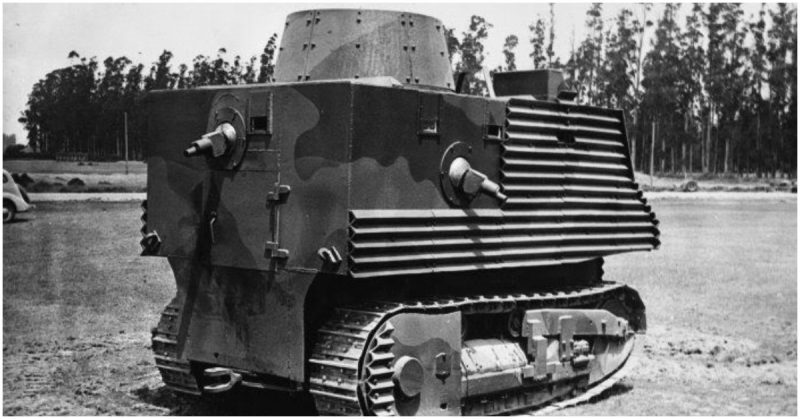A Little Bit Of WW2 Weird.

Ice Aircraft Carriers, the ‘Bergships’

Project Habakkuk was a British plan by Geoffrey Pyke to build aircraft carriers out of pykrete (a mixture of wood pulp and ice).
The carriers, nicknamed “bergships” were to operate as landing platforms for aircraft in the war against the German U-boats in the mid-Atlantic.
A small prototype was constructed at Patricia Lake, Alberta that measured 60 by 30 feet (18 metres by 9 metres), but the final design was to have a deck 2,000 ft (610 m) long with a hull 40 ft (12 m) thick to withstand torpedo attack.

The Goliath Tracked Mine
The Goliath tracked mine “beetle tank” was a remote controlled demolition vehicle used by the Germans in world war two.
Capable of carrying 60 to 100 kilograms of high explosives, the vehicle was intended for tank demolition, disrupting dense infantry and the demolition of buildings and bridges. Goliaths were used on all fronts from as early as 1942 by the specialised Panzer and combat engineer units.
A total of 7,564 Goliaths were produced, but the low success rate, high unit cost, low speed (just above 6 miles per hour (9.7 km/h) and thin armour led to their cancellation.
The American ‘Bat Bomb’

The Bat bomb was an experimental weapon conceived by a Pennsylvania dentist named Lytle S. Adams and developed in the United States.
The bomb was a shell-shaped container that held scores of Mexican Free-tailed bats. The bats were attached to small timed incendiary bombs and released from a bomber at dawn. The bats would roost in buildings and attics, then detonate via a timer to cause vast spatial fires in towns and cities.

The Japanese ‘Fire Balloon Bomb’
The fire balloon was a hydrogen balloon launched by the Japanese containing either an antipersonnel bomb or incendiary bomb.
They were designed as a cheap weapon intended to make use of the jet stream over the Pacific Ocean and drop bombs on American and Canadian cities, forests, and farmland. The balloons were ineffective as weapons, but their potential for destruction and fires had a psychological effect on the American people.
The Bob Semple Tank

Originating out of the need in New Zealand to build military hardware from available materials at the outbreak of WW2, the tank was constructed from corrugated iron mounted on a tractor.
Designed by New Zealand Minister of Works Bob Semple, the first prototype was built on a Caterpillar D8 tractor and equipped with seven Bren machine guns. Due to the lack of armour plate, corrugated (manganese) plating was used in the expectation it would deflect bullets.

The Hafner Rotabuggy
The Hafner Rotabuggy “Malcolm Rotaplan” was a British experimental aircraft that was essentially a Willys MB army jeep combined with a rotor kite like those found on a gyrokite.
It was designed by Raoul Hafner of the Airborne Forces Experimental Establishment and the prototype was built by the R. Malcolm Ltd at White Waltham in 1942.
The Rotabuggy had a 12.4 metres (40 ft 8.2 in) diameter rotor, a tail fairing and fins, but no rudders. It required two men to pilot the aircraft: one to drive it as an automobile, and one to pilot it in the air using a control column. Initially, it was named the “Blitz Buggy”, but that was soon dropped for the “Rotabuggy”.

